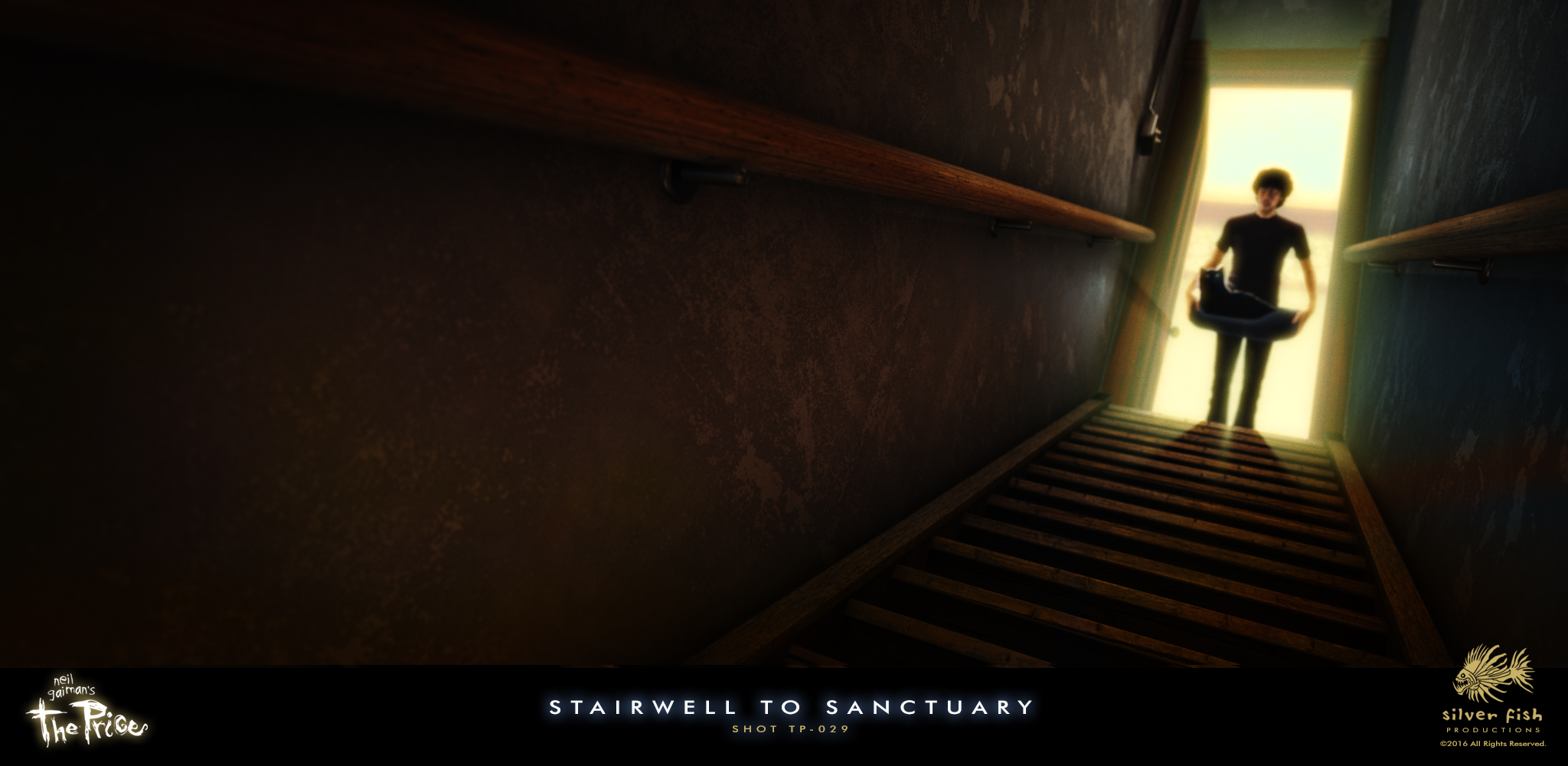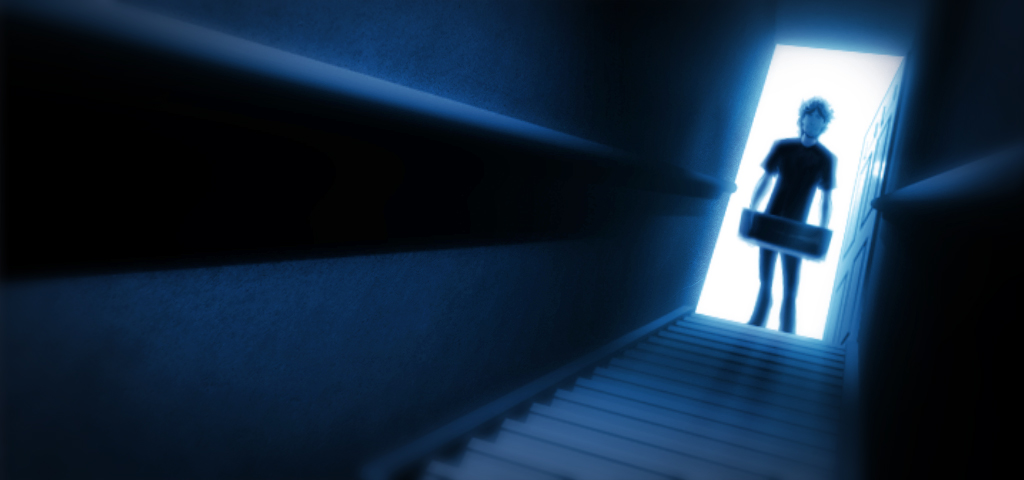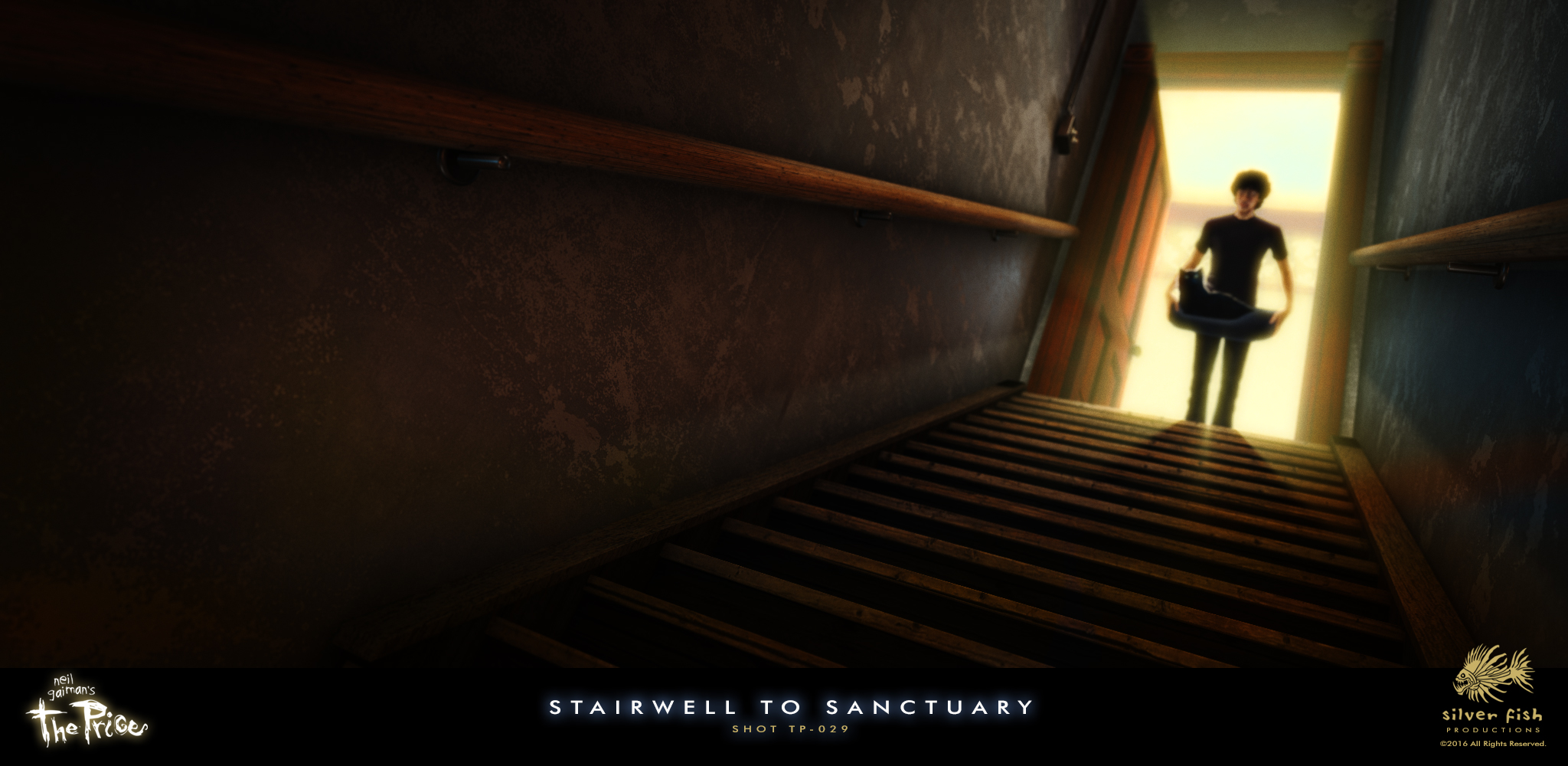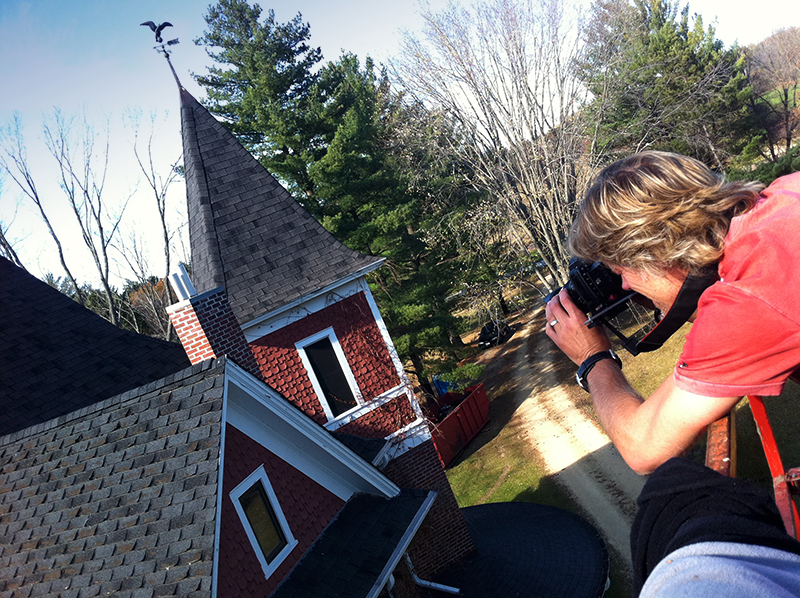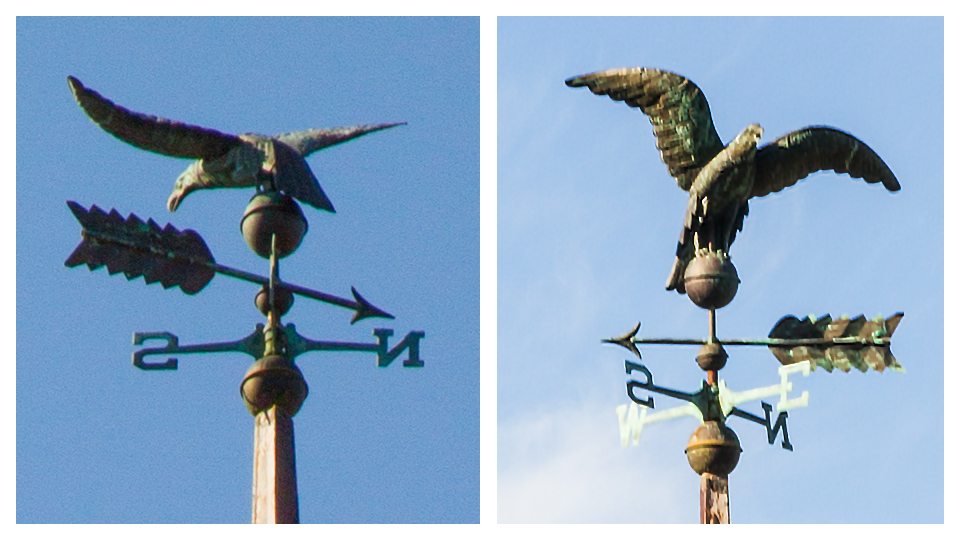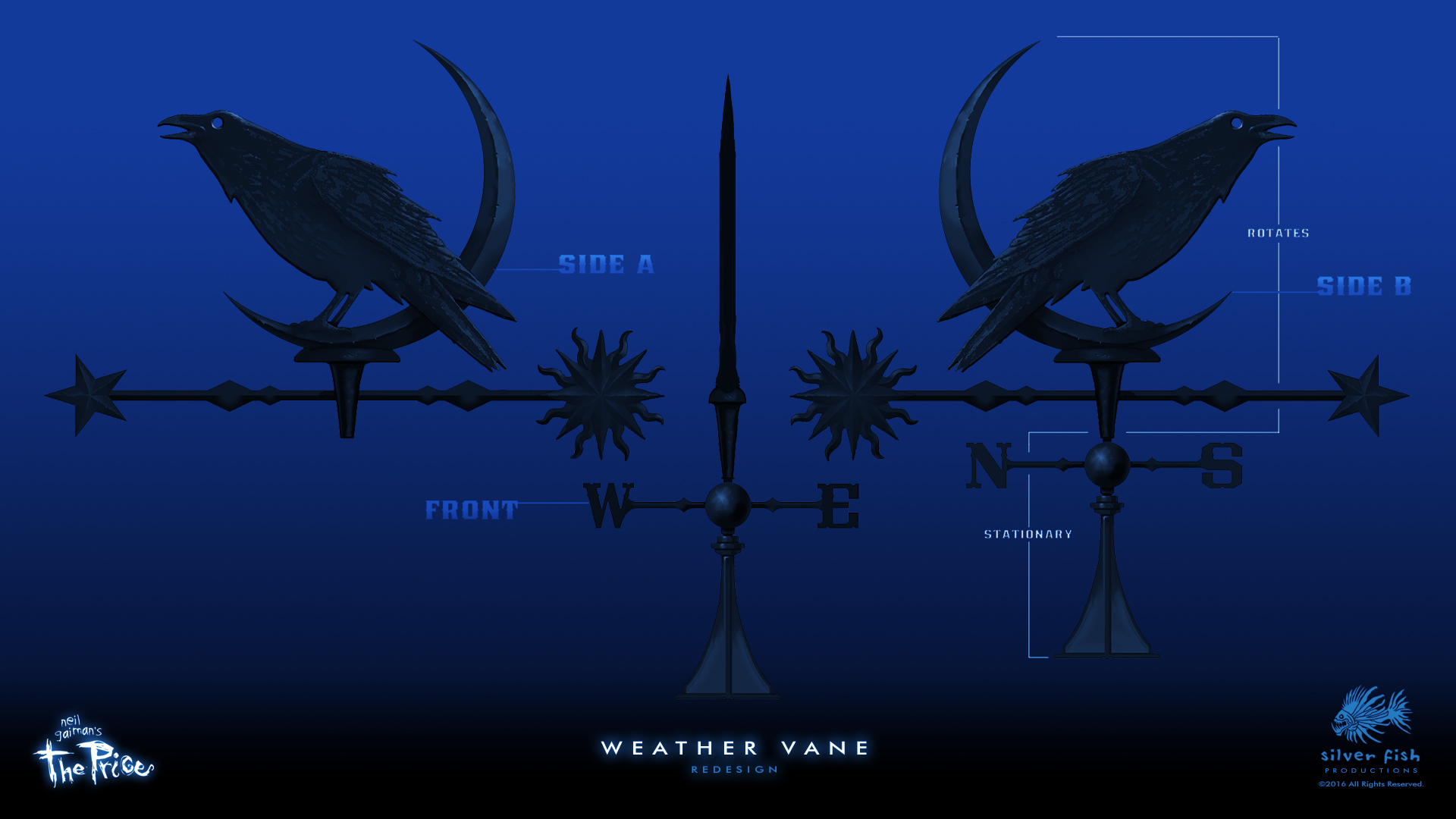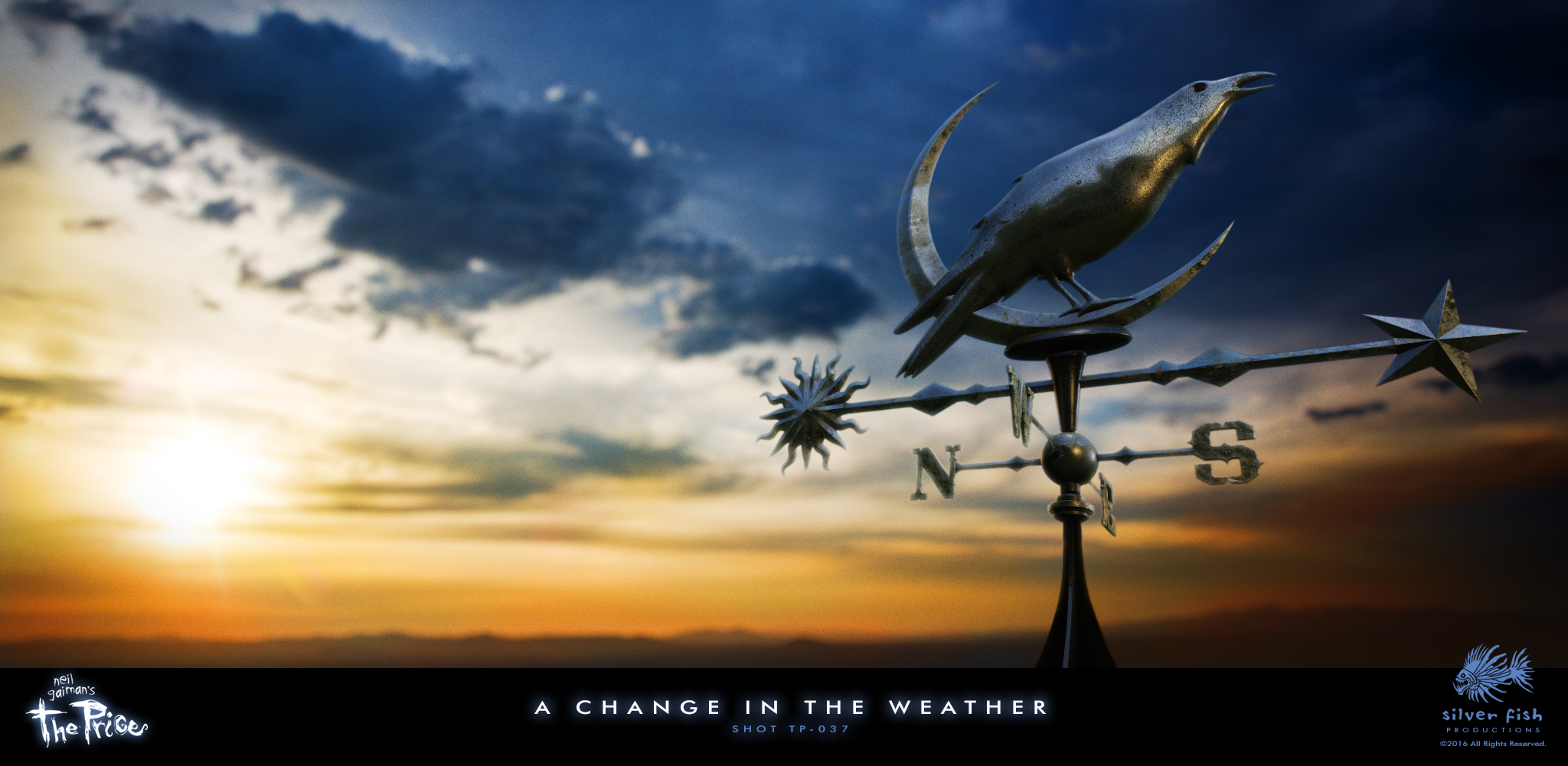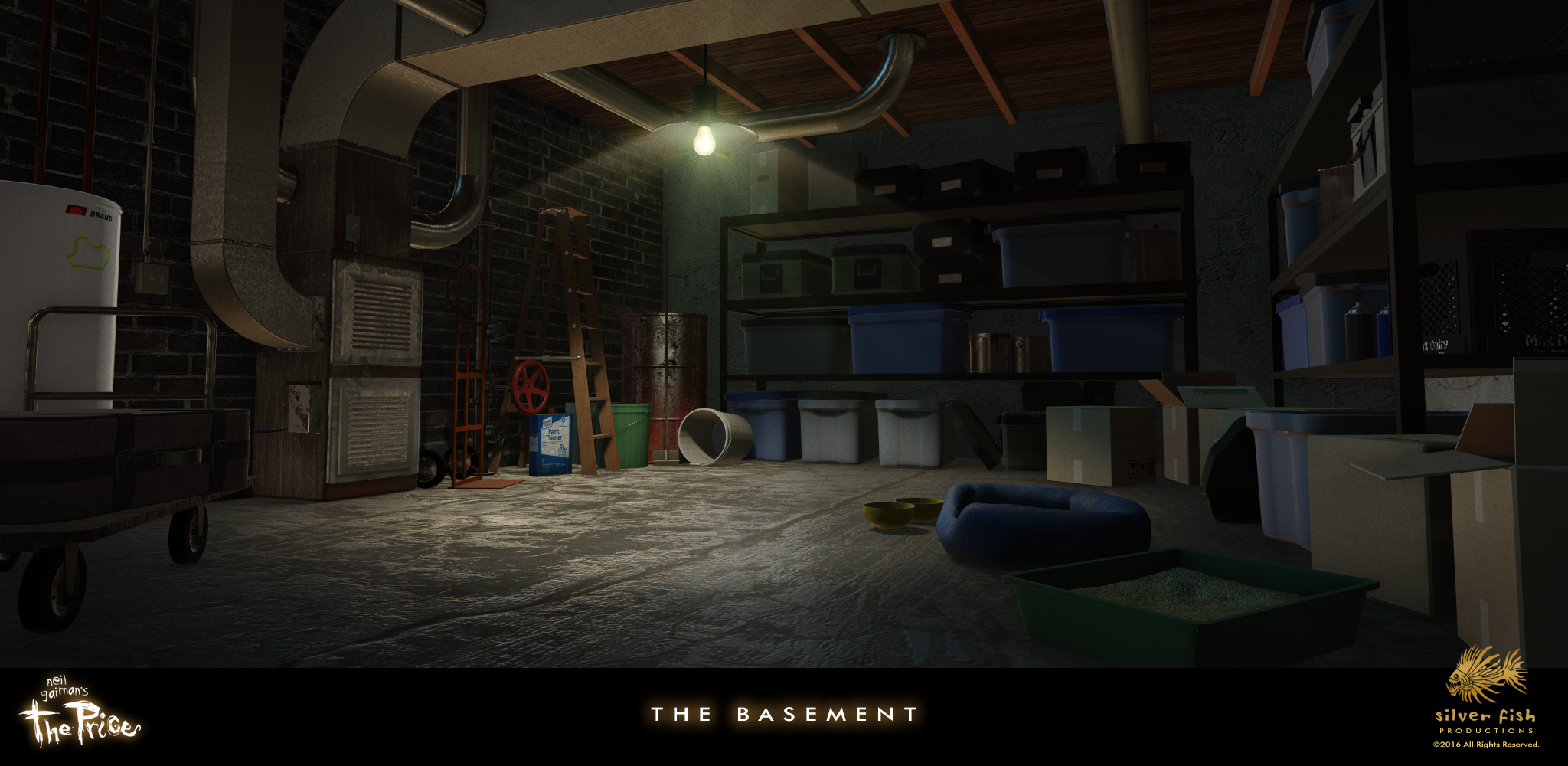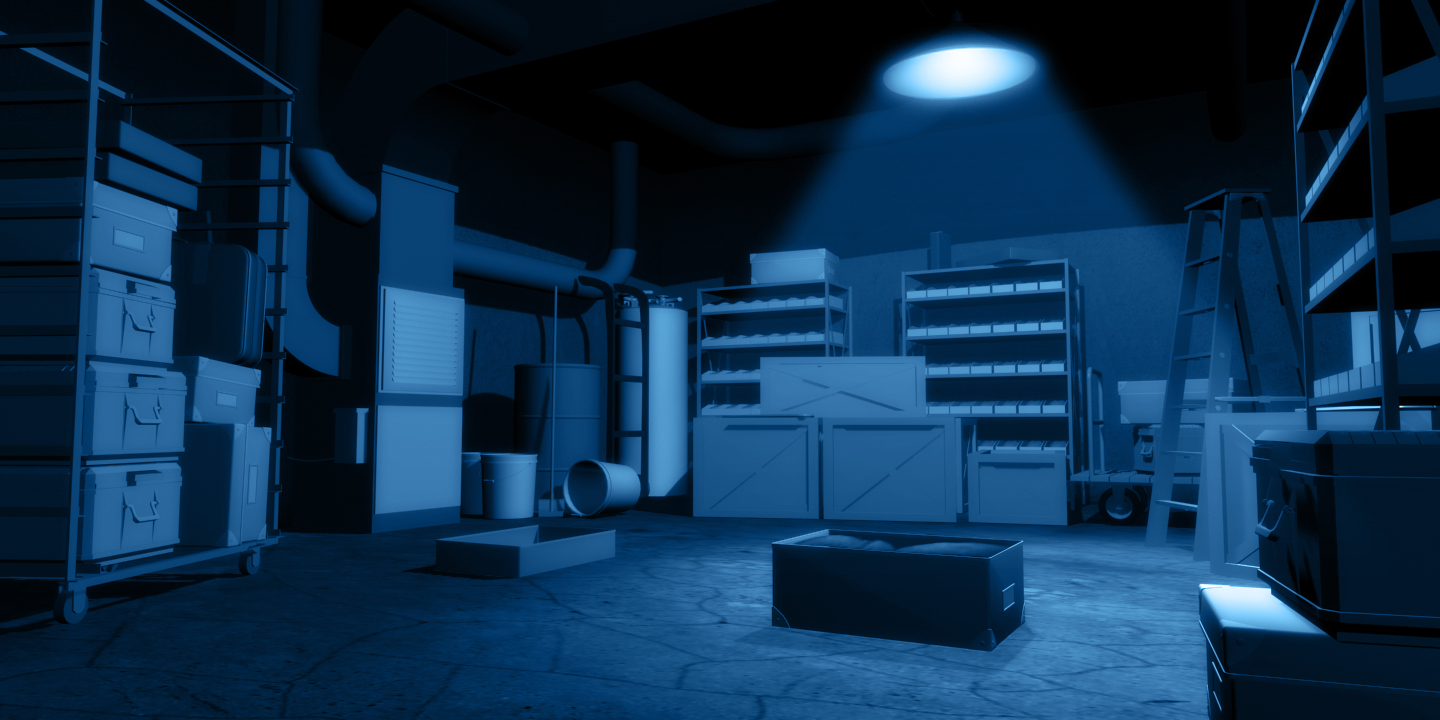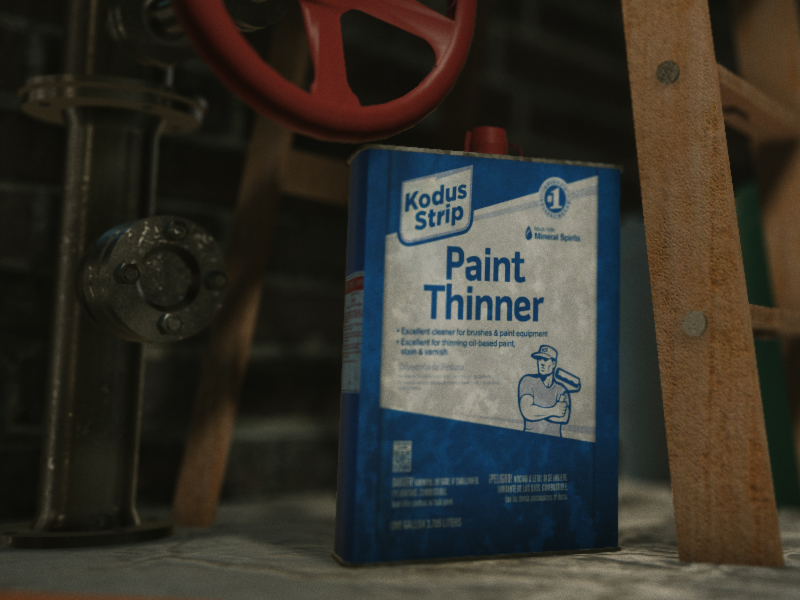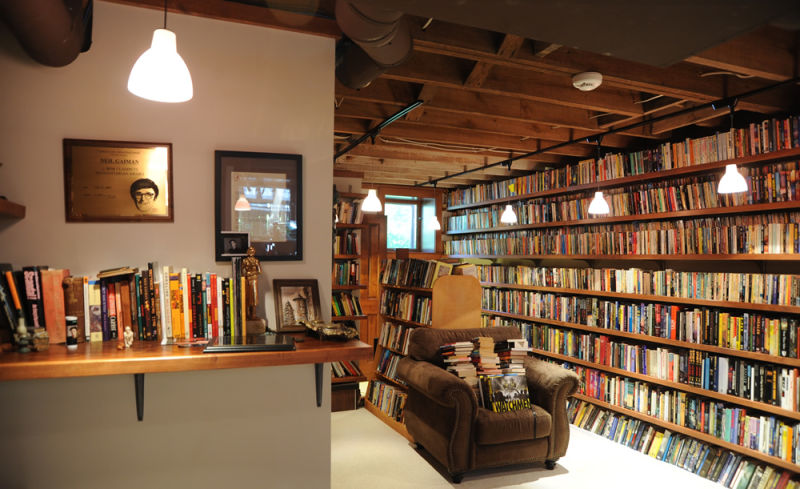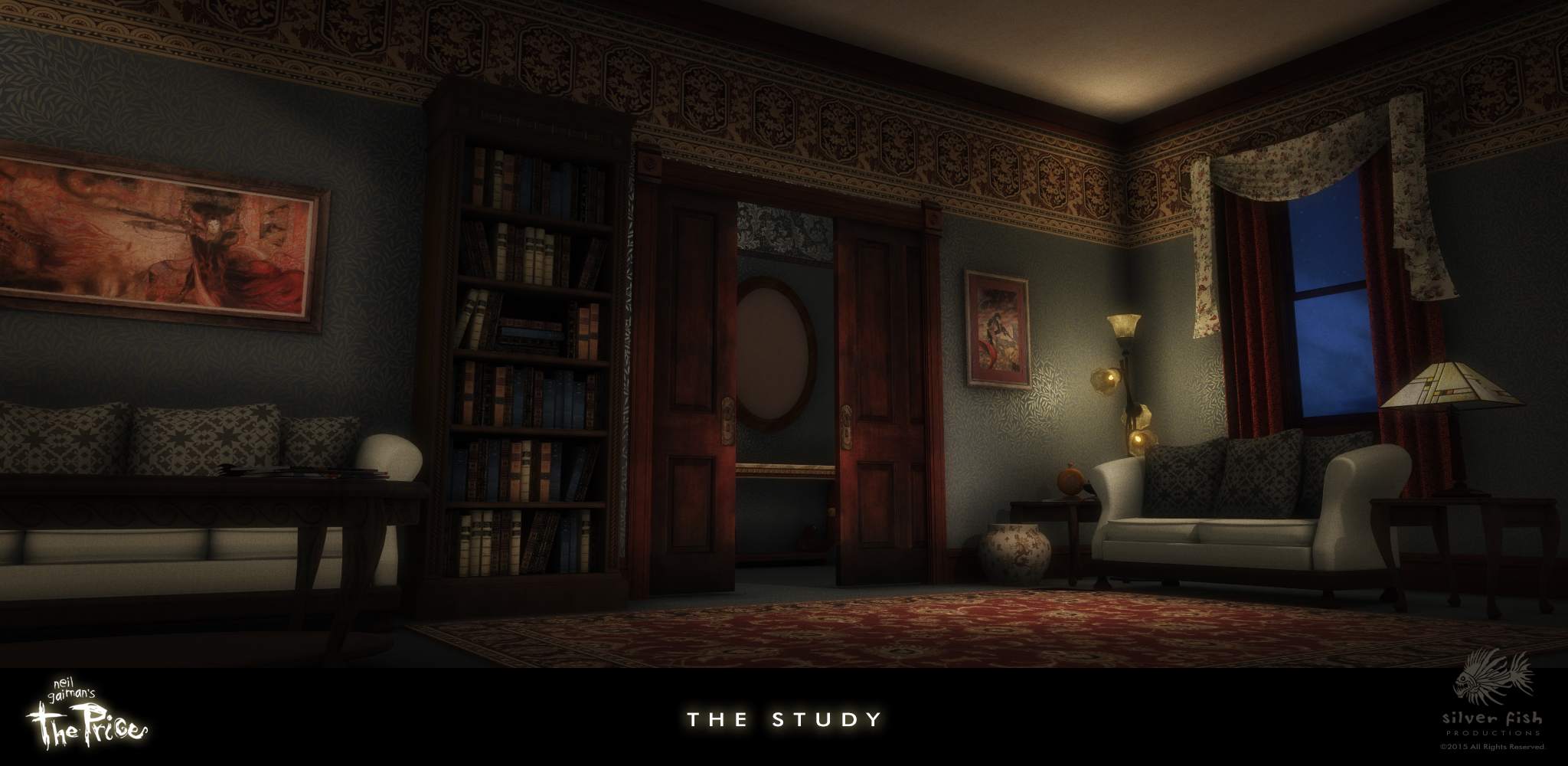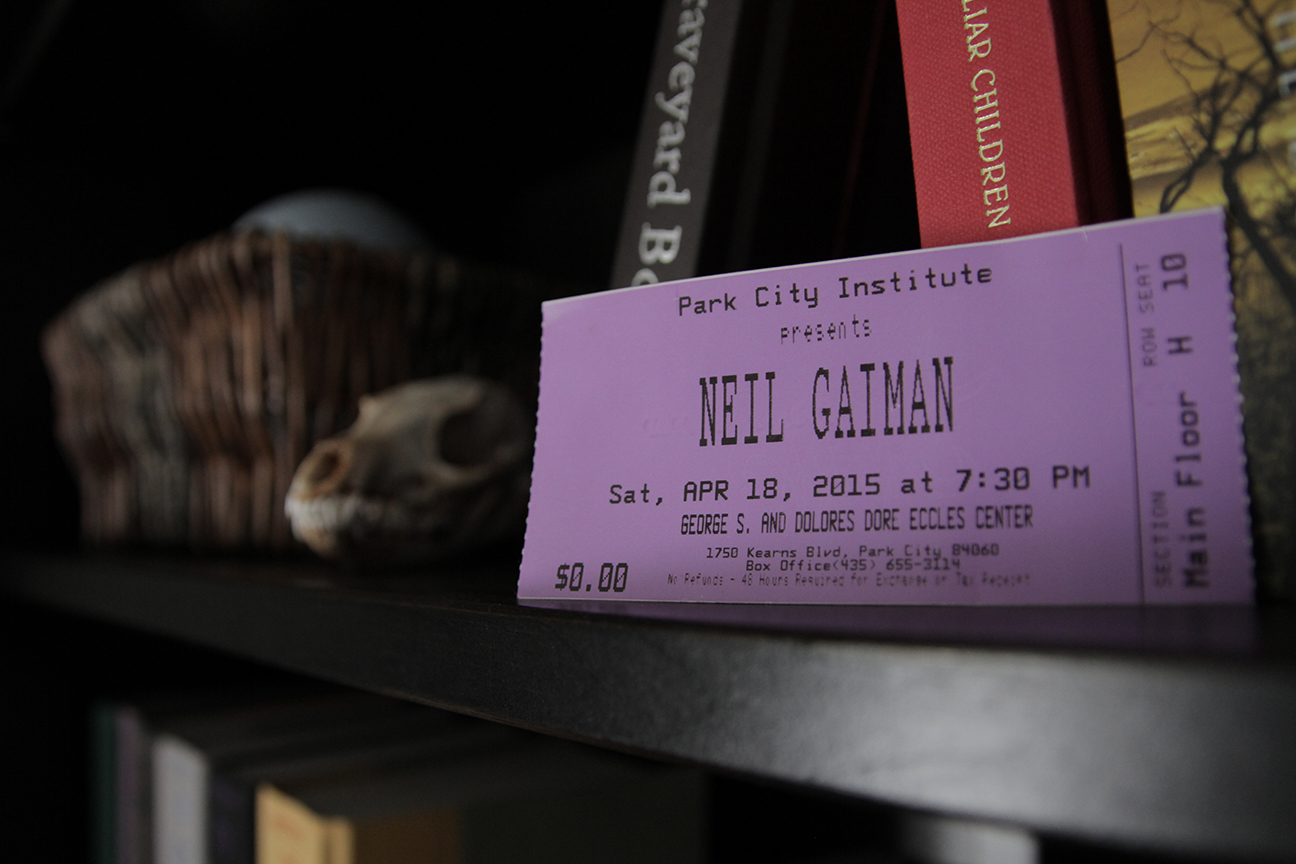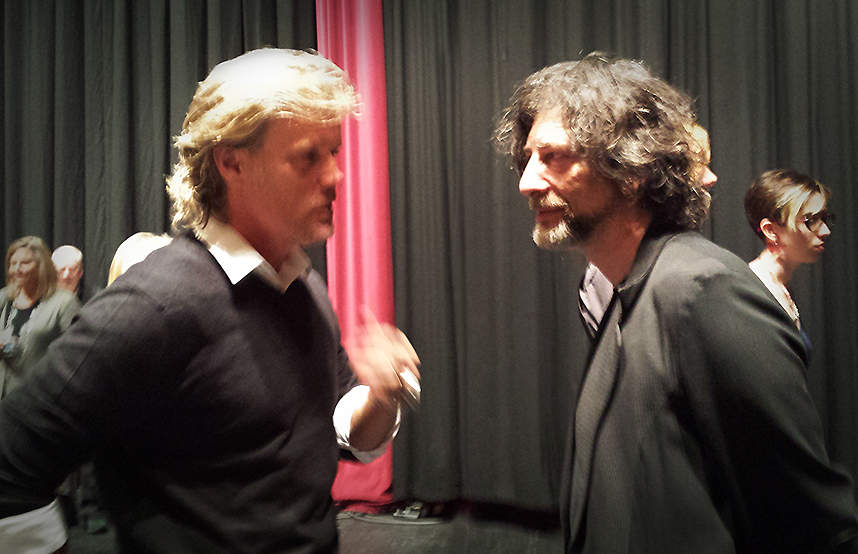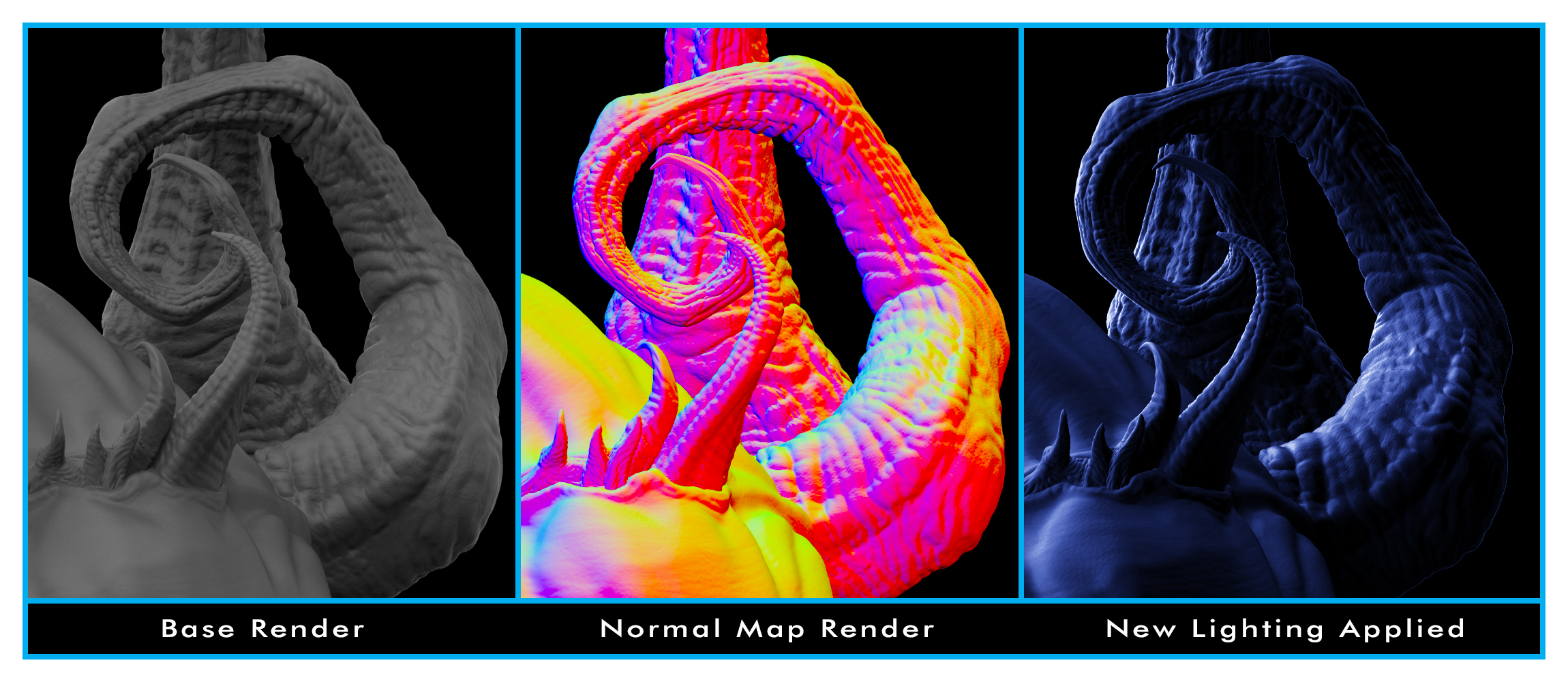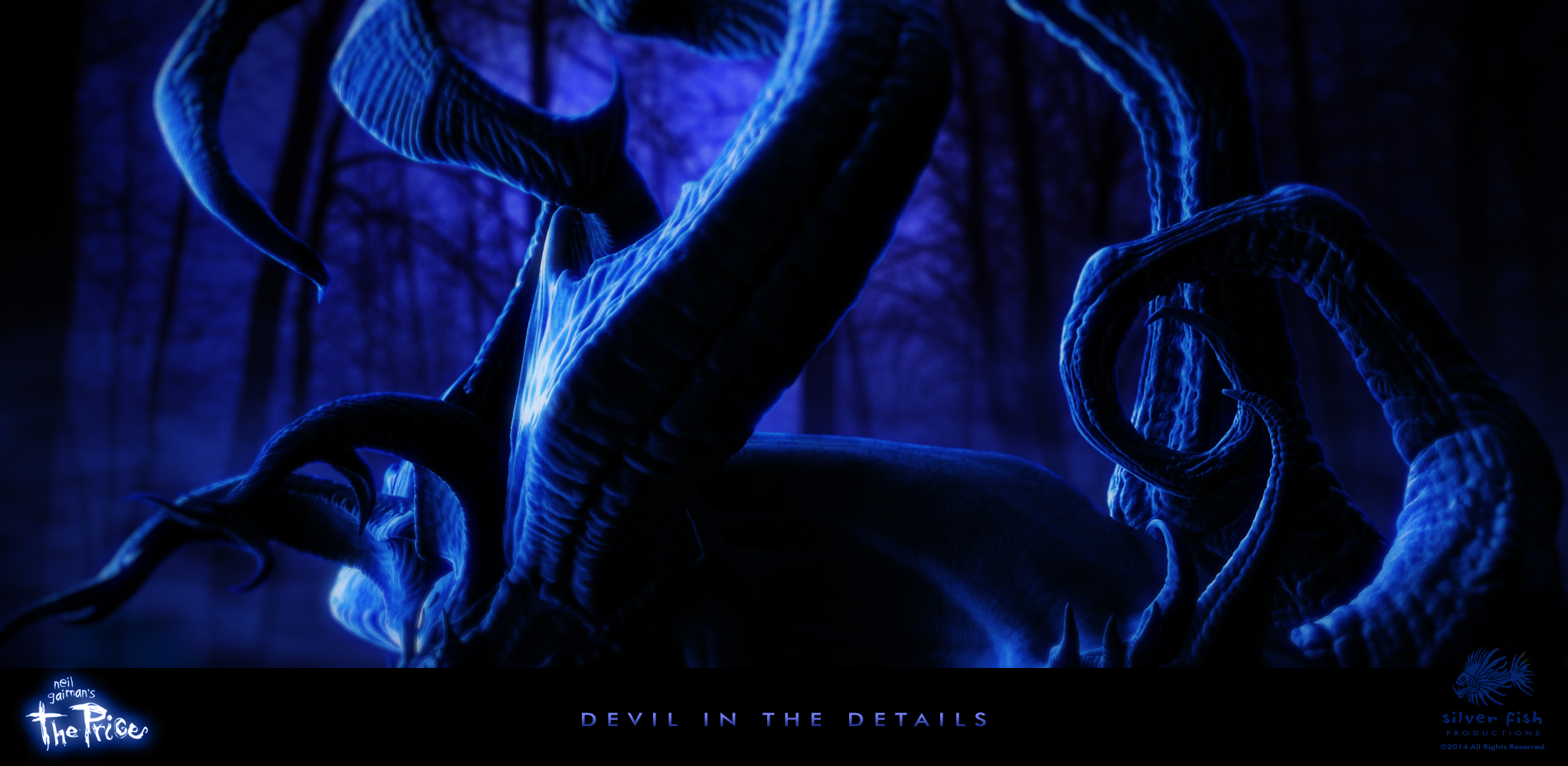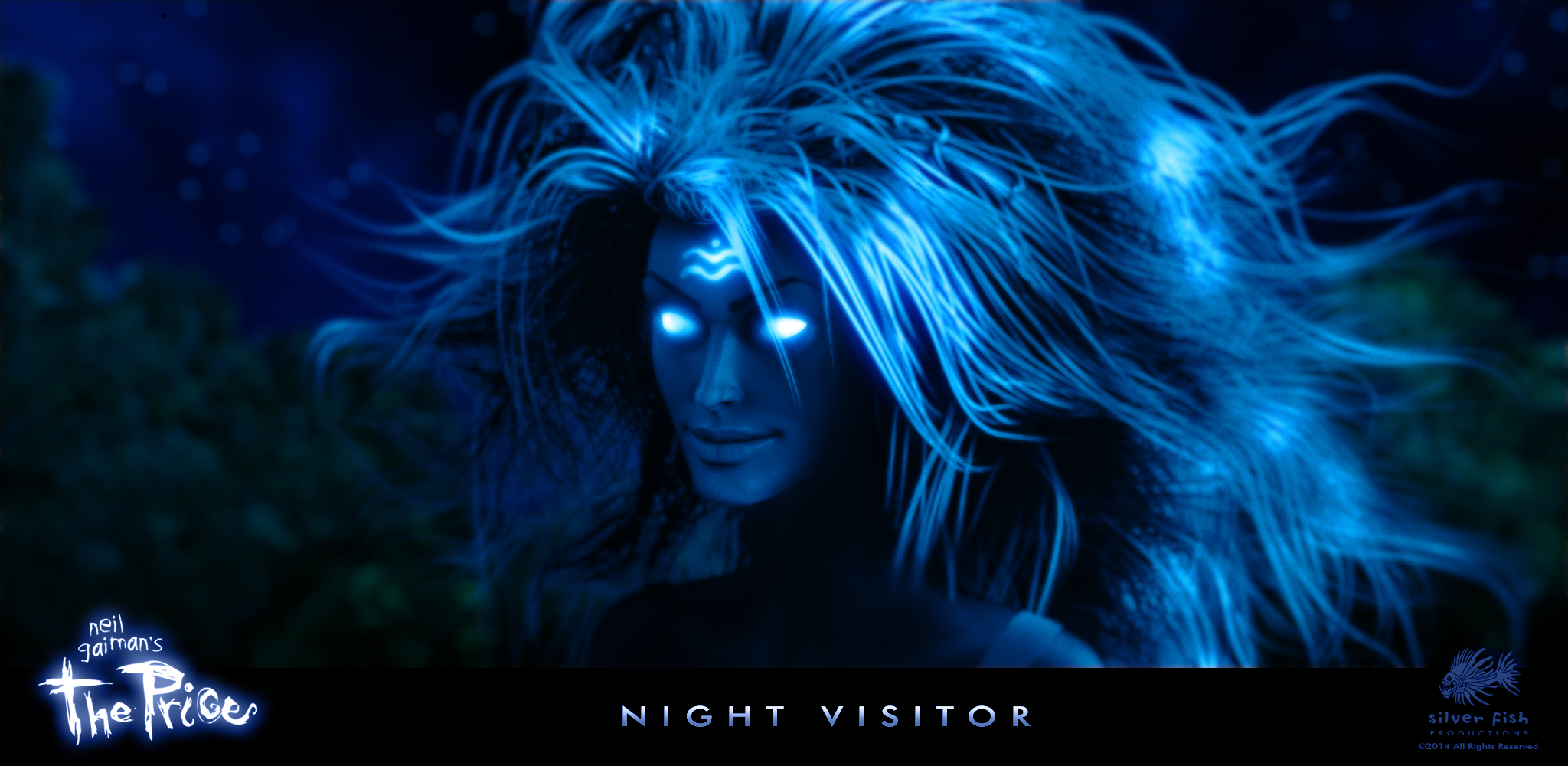So, the bad news is that once again it has been several months since I posted an update here, and for that I am genuinely sorry. The good news is, I have a new image to share, along with a fairly extensive update… so let’s get started:
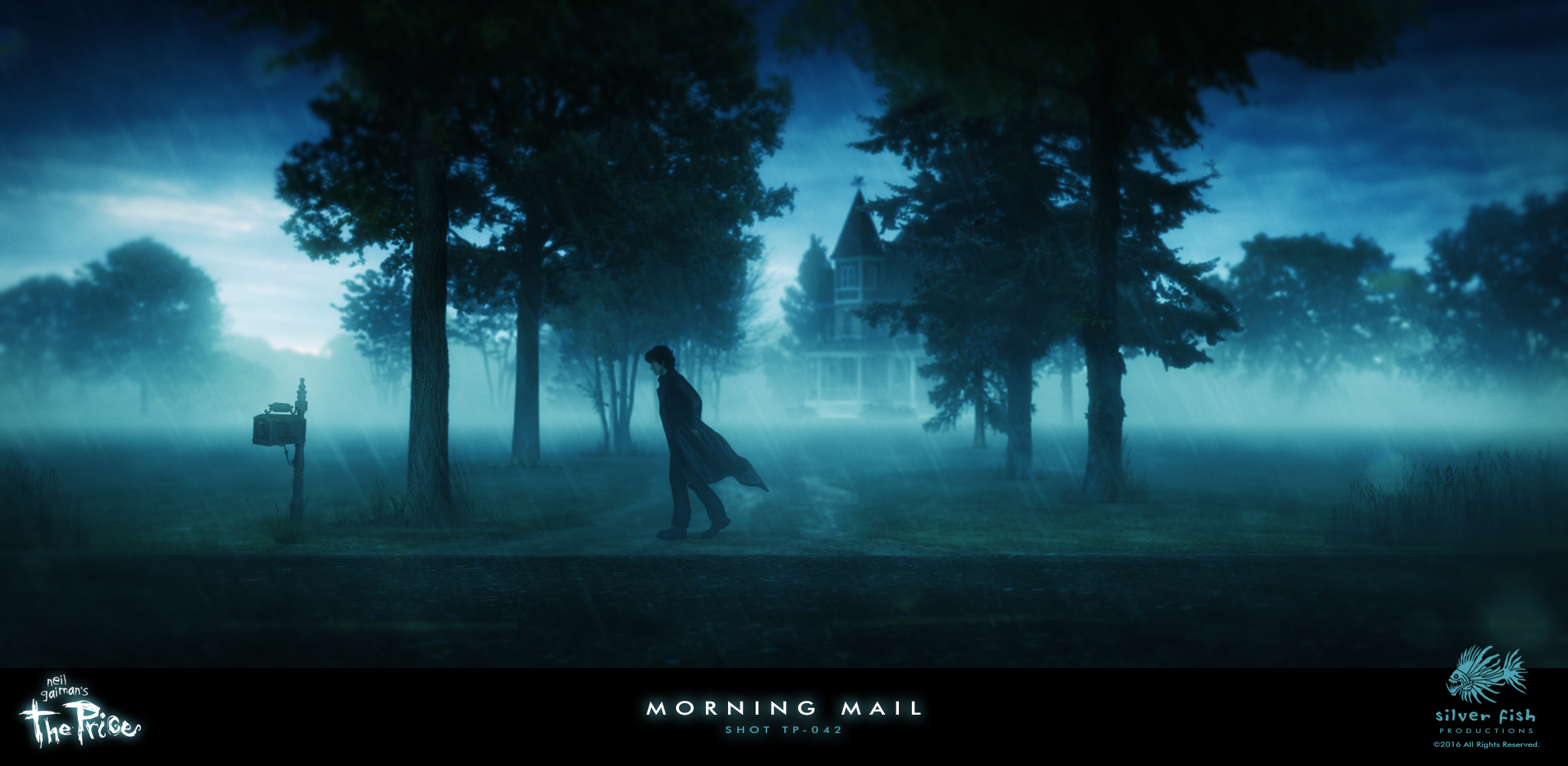
I chose this shot because it’s a good example of how an initial idea can change and develop over time. In the original animatic, this scene was very different:
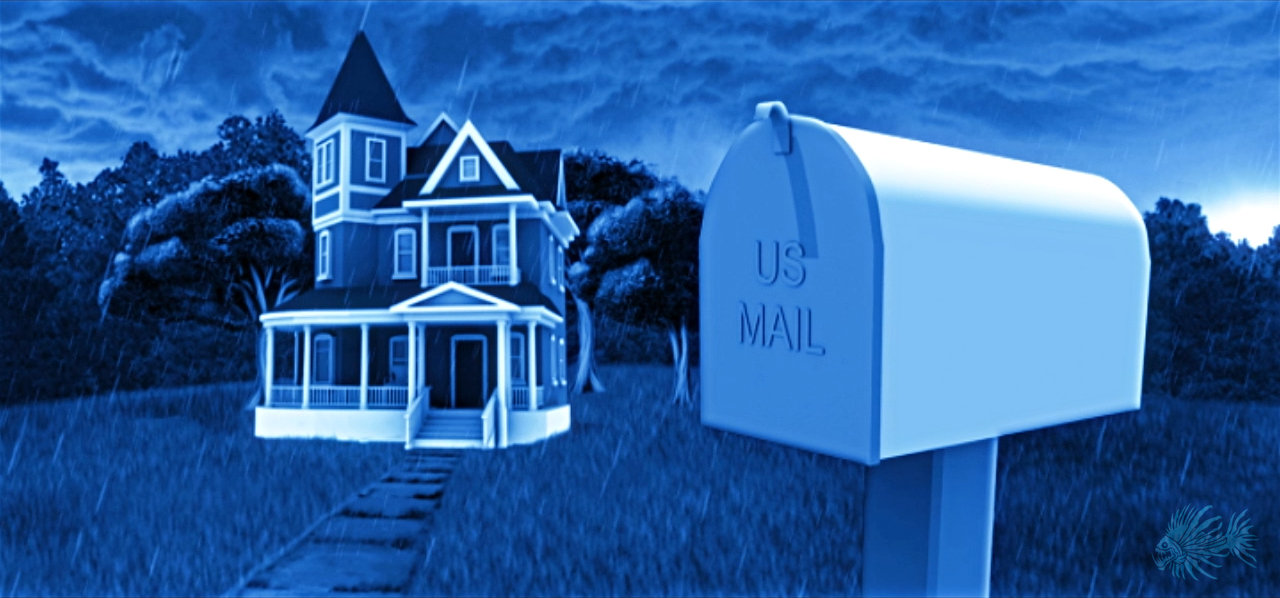
I didn’t have much of the geography around the house worked-out beyond some grass, a bunch of trees in the distance and a road. In fact, if you look too long at this frame, you’ll find all sorts of things that don’t make any sense — but the point of the shot was, “Look! There’s a mailbox!” and maybe a little bit of, “Oh yeah, it’s rainy and gloomy too,” thrown-in for good measure.
I was never happy with the original shot, but didn’t have any clear ideas on how to make it better until my dream-like visit to Castle Gaiman. Turning off a dark country road to move slowly up the gravel driveway toward this eclectic home which had figured so prominently in my imagination over the past few years was beyond thrilling, and surprising as well. The trees lining either side were larger and more mature than I had pictured, and the driveway itself far longer.
These impressions recurred during the next two days as I walked around the property taking reference photographs. In particular, the view from either end of that driveway, with those tall trunks framing its length was quite striking. All of these perceptions were added to the jumbled pile of ideas rolling around inside my head. They eventually emerged as an idea for adding a wider establishing shot at this point in the film using a similar composition (along with fog for separating the layers of the image and increasing visual interest).
In terms of sharpening the cinematic language of The Price, intentionally cutting from such a wide shot down to a close-up of the letter received from the author’s distraught daughter is a bit jarring, and helps add to the building unease of the sequence.
—
Now, I also wanted to elaborate on the current state of the film and where things are headed.
I had an opportunity not long ago of attempting to do exactly this with my youngest brother, Jeff. Living almost 1100 miles away, I don’t often get to visit with my family; unfortunately, the reason this time was neither fun nor recreational (I’ll get to that a little later).
Jeff said he wasn’t exactly sure he understood what was happening with The Price other than production was taking far longer than anticipated, that I was stressed and agitated over its slower progress, and there seemingly wasn’t much to show for all of that work so far…
So I began talking, and about an hour later, he seemed satisfied — to the point when he stated enthusiastically that I should write something similar here in hopes that it might be helpful to those of you who have been waiting so patiently. So…here goes:
At the beginning of my Kickstarter campaign for this project, I had determined not to attempt full-blown animation as the cost, time, and manpower wouldn’t justify the production of a short film with no real chance of making back any investment. Besides, the style on display in the animatic seemed to be intriguing to viewers — having images that blended between poses like a moving graphic novel. That was an approach I could handle mostly on my own, and for a far more reasonable budget.
After years of fruitless searching for a way to fund The Price, Kickstarter suddenly appeared on the horizon, and I knew how this film could finally happen. 33 days and 2001 backers later, it was on!
Creation is a process of discovery, and you need to allow for some false-starts and dead ends as you make your way along an unknown and lonely road; sometimes, the way to find the right path is to go down all of the wrong ones first. As Thomas Edison famously said, “I have not failed. I’ve just found 10,000 ways that won’t work.”
To wit: the character models were designed and built with the intent that they be posed and rendered as single images rather than a series of animated frames. These digital sculptures, created by Ryan K. Peterson, were phenomenally crafted, but proved difficult to translate from the sculpting software into another 3D program that would create the hair/fur needed, allow each model to be moved into the requisite poses, and then rendered with the correct lighting and materials (for example, having skin with translucent properties). We tried multiple methods and insanely over-complicated combinations that all yielded disappointing and compromised results. Time was ticking away, and every road seemed to lead nowhere.
The sets and environments had their own issues as well. The model of the house was large and unwieldy, and getting it to render was also a royal pain! Using a traditional rendering pipeline meant having to wait for long periods of time (even hours, when you only have one machine working on it) before you can see if you placed your lights properly, had everything aligned in the shot correctly, or if the overall look was somewhere even close to what you had been aiming for. It was like moving things around in a darkened room, then having to wait for the lights to finally come on in order to see what you had done — argh!!!
In a full animation studio, there are many groups of skilled artists and technicians that focus on specific problems and details like these (not to mention the vast rendering “farms” created from hundreds of dedicated CPUs to crunch all of that data). I had just a few guys contracting with me to build/create the things that I couldn’t, and then I was to combine all of these custom pieces together myself. I began to realize that despite my initial, more modest ambitions, what I actually wanted now was to try and create a full-blown professional-grade product, only it had to be made by hand on a very limited budget.
Regardless, I was determined to fight my way through these obstacles, even as they continued to pile-up in relentless fashion.
Then, as time continued relentlessly by…something changed.
Technology.
Suddenly, the sculpting program we used introduced newly-developed tools, and partnered with a company whose ground-breaking renderer could import the files directly and render them quickly, right in front of your eyes. You could tell within seconds if the lighting design worked, and the model materials looked like they were supposed to, with hardly any major tweaking — it was mind-blowing!
Then, a whole new world of possibilities opened up with a program called Element 3D, created by Andrew Kramer and Video Copilot. This special plugin allowed 3D models to be opened in Adobe After Effects, the program I use for compositing all of my shots, and with which I feel extremely comfortable. What all of that means is I could now bring my house model into After Effects and light it, position and modify it all in real time! I had immediate results that would respond instantly as I changed parameters and settings, using the same kind of GPU magic that today’s highly sophisticated videogames also use. Having instant feedback so I could dial-in the look of these models was now a reality — and I could do it myself on my single (though admittedly, crazy-powerful) workstation. Light bulbs (Edison again) were literally popping-on in my mind like machine-gun fire!
And with these new capabilities came a slew of tantalizing possibilities as well. For example: do I really have to keep all of these images static? Wouldn’t it be so much more immersive to start the film by moving the camera slowly toward the house, past thousands of blades of 3D grass and right up to that tree trunk with those strange markings on it that reveals the film’s title? (If you haven’t already seen this shot, click here.)
Can you see where all of this is going? Imagine, after spending years of tinkering, trying to put a car together in your spare time with a bunch of custom-made components, you realize you now have the ability to build something more sophisticated, powerful and even more beautiful…but that means taking it all apart and then putting it back together in a new and different way. That’s the best metaphor I can think of to describe where things are. None of the parts that have been worked on so diligently have been cast aside or wasted, just used in a better, more advanced fashion.
I’ve stated this before, but it bears repeating here: even more than money, my Kickstarter backers have afforded me the rarefied opportunity to create something at my very best, A+ level. Because there is no paying client waving a glaring deadline in my face, I can listen to that aesthetic-driven voice in my head that sees a better way of putting things together. Trying to explain why an artist should pay heed to that voice is difficult — how can you quantify inspiration or justify a creative instinct?
Ultimately, the process of creation really is a lonely road, and always traveled for the very first time. It’s never easy to attempt an explanation as to why something looks “off” to me, or how I know when something else feels “right.” It’s like being asked where ideas come from — how can you answer that? All I know is that you need to start the journey with faith in that inner sensibility, then be willing to head down the unknown path alone, wondering at what you’ll find…
Of course, this process takes time. We all have lives to live, and life frequently requires things of us that we may not have accounted for.
Now back to why I was visiting my brother Jeff: he called early Sunday morning on the last day of January to tell me that our father had suffered a heart attack; less than an hour later, he called again to say that he was gone.
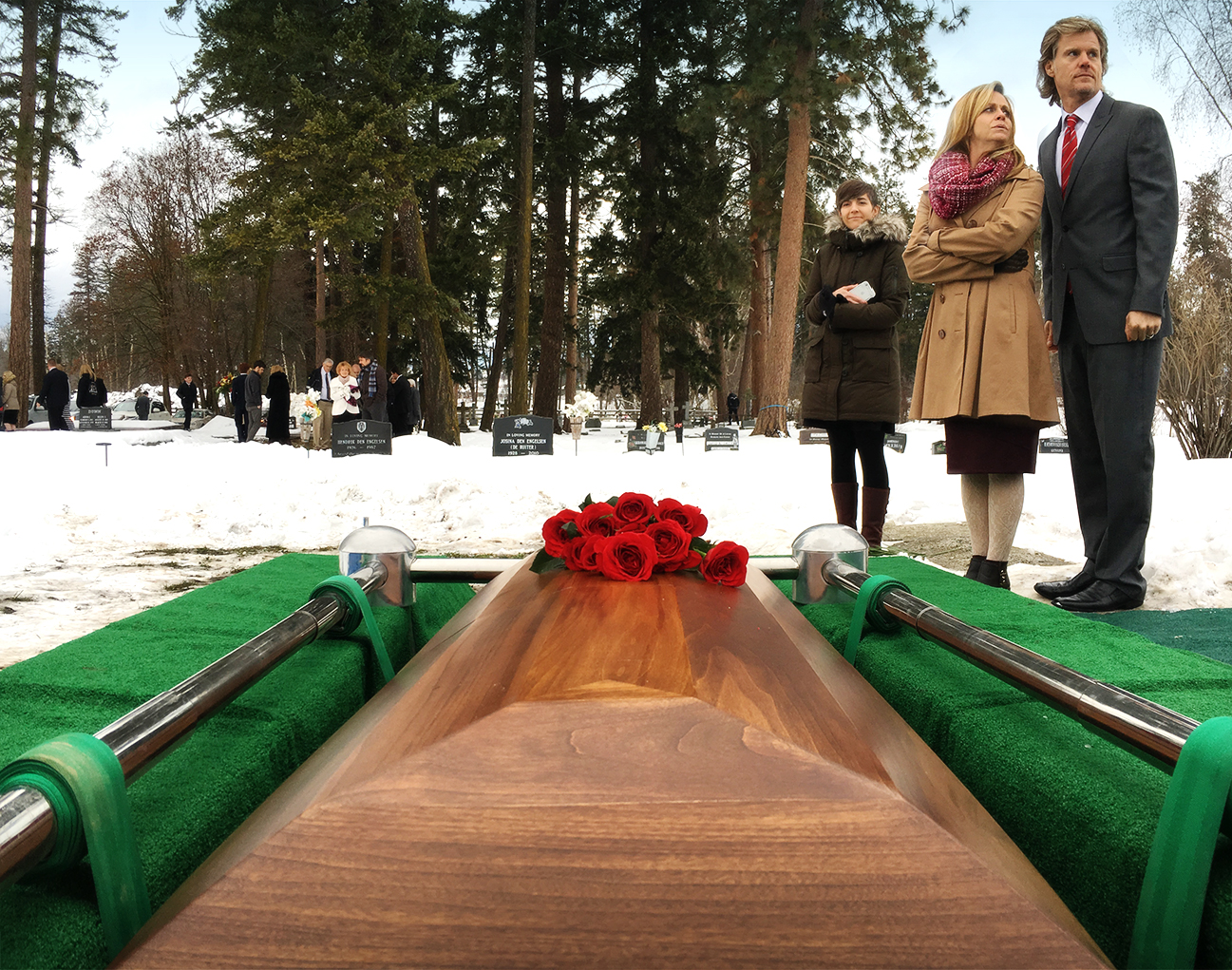
Photo: Shain Walker
(I was going to share some things with you here about my Dad, but have decided to save those thoughts and precious memories for a later post.)
I stayed with my Mum for awhile after the funeral. She has a wonderfully resilient outlook, but now bears the burden of living alone and managing the small farm that our family enjoyed so much growing up. Life has drastically altered the rules for her, and yet she is finding her way along this new path.
That’s what we all do. My wife always refers to Dory’s refrain in Finding Nemo as our family motto: Just Keep Swimming. Sure, that sounds especially fitting when you consider that our last name is Salmon, but there is a profound truth to be found as well. You just keep moving forward, no matter what comes your way.
And often, those life events are joyful and glorious: last month, my daughter Shain (who took the marvelous picture above) was married to her best friend (a really great guy), the first of our children to do so.
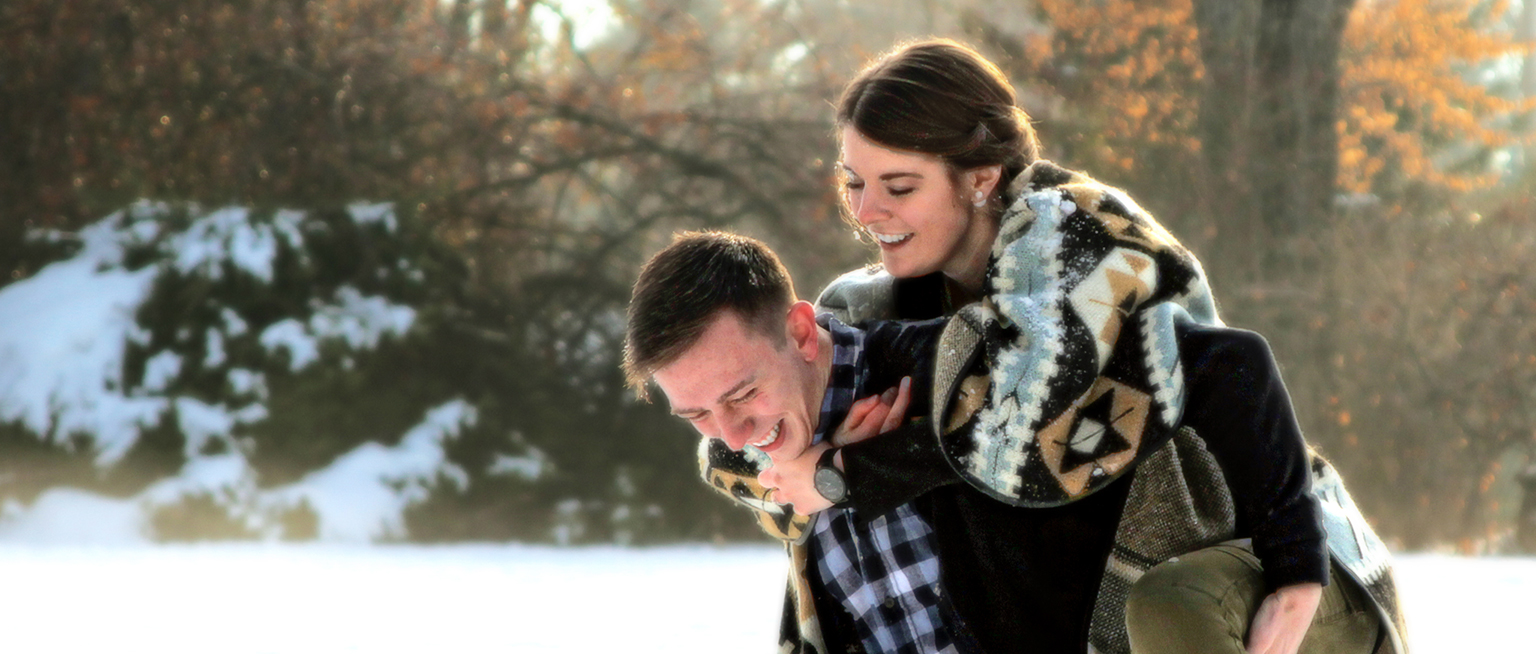
Above all, family remains the highest priority, despite schedules brimming with responsibilities and activities that demand our time and attention.
Having the chance to make this film in the way that I want to is a great privilege, one I feel immense gratitude for. The constant support and encouragement from the vast majority of you, including Mr. Gaiman, helps more than you realize, especially on those days when the obstacles loom large and discouragement tries to worm its insidious way into my heart.
But I’ll never give up. It’s simply not an option.
Neil said that I fell in love with The Price, and that really is the best way to put it. Of course I am anxious to have it finished — and I will always maintain that no one wants to see this movie more than I do! I constantly daydream of being invited to some sort of Gaiman-centric event one day in the near future and being able to show it to all of you, getting to feel your response in person. This project has been part of who I am as an artist for so long now, I will always feel a deep connection to this moving and thoughtful story of when The Black Cat came to stay.
So don’t give up hope; I may still be walking down that lonely road, but know I will be returning soon to share what I’ve found along the way.




